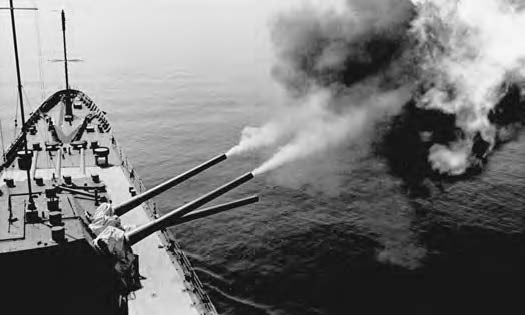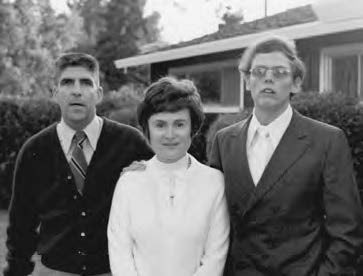How a Navy sailor fell off his ship, played dumb — and became a Vietnam POW hero
South Dakota native Doug Hegdahl was serving with the Navy during the Vietnam War when he fell into the waters of the South China Sea – soon becoming the youngest, lowest-ranking POW at the infamous Hanoi Hilton. As a new book details how Hegdahl played dumb to his captors – secretly memorizing POW names and intel – its author talks to Sheila Flynn

Your support helps us to tell the story
From reproductive rights to climate change to Big Tech, The Independent is on the ground when the story is developing. Whether it's investigating the financials of Elon Musk's pro-Trump PAC or producing our latest documentary, 'The A Word', which shines a light on the American women fighting for reproductive rights, we know how important it is to parse out the facts from the messaging.
At such a critical moment in US history, we need reporters on the ground. Your donation allows us to keep sending journalists to speak to both sides of the story.
The Independent is trusted by Americans across the entire political spectrum. And unlike many other quality news outlets, we choose not to lock Americans out of our reporting and analysis with paywalls. We believe quality journalism should be available to everyone, paid for by those who can afford it.
Your support makes all the difference.The front-page newspaper photograph was striking on the morning of April 6, 1967 — a dramatic image showing the U.S.S. Canberra firing at Communist targets from the warship’s position in the Gulf of Tonkin.
Little did those readers know – his shipmates certainly didn’t – that one of the Canberra’s most junior sailors was struggling through those very same waters that day.
South Dakotan Douglas Brent Hegdahl, who’d never seen the ocean before joining the Navy in the midst of the Vietnam War, had somehow fallen from the ship. Just 20 years old, he survived hours in the Gulf before North Vietnamese fishermen plucked him to safety.
Then he was turned over to the North Vietnamese – and so began his incredible journey as the youngest and lowest-ranking POW at the infamous Hanoi Hilton, where Hegdahl pretended to be stupid to his captors as he secretly collected information, displaying an ingenious aptitude for memorization, observation and subterfuge.
Hegdahl memorized the names of 254 POWs, helping to reclassify 63 service members from MIA to POW – not only bringing solace to dozens of wives and families but also providing the military with key intelligence, such as the exact address of the feared prison itself.
“No one knows what they’re going to do under circumstances like that and Doug, who was from a tiny town in eastern South Dakota, barely got through high school, but he was a smart guy, and he figured it out,” says Marc Leepson, whose new book, the first biography of Hegdahl, The Unlikely War Hero: A Vietnam War POW’s Story of Courage and Resilience in the Hanoi Hilton, is out this month.

“He somehow figured out the way to survive and did it against all odds and succeeded against anybody’s wildest expectations,” Leepson, 79 and also a Vietnam veteran, tells The Independent.
Memorizing names changed lives. “I mean, 63 names were changed from ‘missing in action,’ which usually means you didn’t survive, to ‘prisoner of war,’ which means you did survive,” he says, adding that Hegdahl was an “enlisted man” amongst fellow prisoners who were “Naval Academy graduates, guys who are pilots of giant jet planes that flew off of decks of aircraft carriers and were air aces in the sky.”
“And this 20-year-old kid who was in the deck crew does this amazingly,” he says. “I think it was one of the most heroic acts not in combat during the Vietnam War. And I think that’s something that people should know.”
Funnily enough, while Hegdahl’s heroism originated in a brutal prison ironically nicknamed for a famous hotel chain, his early life played out in a different place also locally nicknamed “Hilton.”
Hegdahl and his two brothers grew up living in and working in a hotel his parents purchased in downtown Clark, South Dakota – “which the locals nicknamed the Hegdahl Hilton, an ironic nod to the fact that it was far from fancy,” Leepson writes.
Both his parents were Lutherans hailing from Norwegian immigrant families, and Hegdahl enjoyed something of an all-American midwestern childhood, swimming in the local pool and Boy Scouts when he wasn’t working on farms or at the family business. He was known as a playful, well-liked practical joker but didn’t apply himself at school, taking more than four years to finish high school and graduating at age 19 and a half. He was also a prime candidate for the draft as America continued its highly controversial war effort in Vietnam; his mother convinced him to join the Navy before he could be conscripted, reasoning that it would be safer than in-country combat.

After training in San Diego, Hegdahl got sent to the Canberra in February 1967 – and two months later found himself overboard. No one, including Hegdahl, has ever been able to explain how he ended up in the water. The 6-foot, 225-pound apprentice seaman remembered getting up from his bunk and leaving behind his thick eyeglasses, before going up to the deck to watch the guns firing in the dark.
“I can’t tell you how I fell from my ship,” Doug said after his release. “All I know is, I walked up on the deck. It was dark and they were firing, and the next thing I recall I was in the water.”
Luckily, the former high school athlete was a strong swimmer. He treaded water for hours before fishermen spotted and rescued him, then turned him over to the North Vietnamese. Two days later, he found himself at Hỏa Lò, better known as the Hanoi Hilton – where US prisoners including future presidential candidate John McCain were brutally tortured during years of captivity.
“At first, the North Vietnamese interrogators figured Doug Hegdahl for a spy who concocted a dubious tale of falling off a ship in the Tonkin Gulf,” Leepson writes. “But he soon convinced them that he was anything but a CIA spy; that he was, in fact, a lowly enlisted man who had no knowledge about any Navy operational information that could be useful to them; and that he really was blown off the deck of his ship.
“But he also conned the North Vietnamese into believing that he was a bumbling fool by playing it dumb when they interrogated him – so much so that the guards started referring to him as ‘The Incredibly Stupid One.’”
Hegdahl’s ploy – and the sense of humor he managed to cling to – helped him glean information and work against the enemy as he dutifully memorized names provided by other prisoners.
“I had probably the most embarrassing capture in the entire Vietnam War,” Hegdahl said in a 1997 interview Leepson quotes in the book. “I found that my defense posture was just to play dumb. Let’s face it, when you fall off your boat, you have a lot to work with.”

Leepson’s book outlines how, while sweeping the yard, Hegdahl was also sabotaging North Vietnamese vehicles by surreptitiously pouring sand and gravel into gas tanks. On more than one occasion, he was taken away from the prison to support various North Vietnamese propaganda efforts, allowing him to pinpoint and memorize Hanoi Hilton’s exact location.
“He was given a little bit of freedom compared to most of the guys, and he was able to scout around and look and report back on torture, and he found out the address of the Hanoi Hilton,” Leepson tells The Independent.
Hegdahl and his imbecile routine consistently thwarted propaganda projects by the North Vietnamese, including an attempt to re-enact his watery capture on film. Leepson laughs about “the way he outfoxed them.”
Directed by a propaganda filmmaker and surrounded by villagers serving as extras, Hegdahl repeatedly pretended not to understand instructions, instead playing up and acting out during what should have been scenes.
“He got the villagers, who were supposed to be like extras in the movie … all on his side, and they were laughing and joking, and he was able to frustrate the director to the point that it never got made,” Leepson tells The Independent.
He quotes a 1972 interview given by Hegdahl – who sought to escape the spotlight as time went on after his release – in which he says: “I was so mad about their propaganda that it became a personal war to think how I could mess it up.”

Hegdahl’s savviness and knack for memorization caught the attention and respect of superior officers in the POW camp – who ordered him to accept early release, which US military prisoners are forbidden from doing according to the established code of conduct.
Hegdahl refused a direct order the first time but eventually relented, and he went home in 1967 with vital information.
“He helped with the intel and, in addition to the names … [Hegdahl’s work] was part of the reason that, in the fall of 1969, the North Vietnamese, and I write about it in the book, changed the treatment of prisoners for the better,” Leepson says. “Torture didn’t stop, but it did lessen significantly, and some of their strictures were taken away – for instance, communication.”
Roger Shields, who served as deputy assistant secretary of defense for POW/MIA Affairs from 1971 to 1977, explains in the book that, after Hegdahl provided names to the Pentagon, “we told the North Vietnamese, ‘You are responsible for the salvation and the survival of these particular men,’ thereby putting the onus on the North Vietnamese in a way that had never been done before.”
On the same day that Hegdahl participated in his first post-release press conference, speaking from Bethesda, Maryland, Ho Chi Minh died – prompting a change of leadership that also coincided with more pressure on the Communists from the Nixon Administration regarding treatment of POWs. (The final prisoners would eventually be released in 1973.)
Hegdahl joyously reunited with his family upon his return, and his parents had ensured his military paychecks were invested during his time as a POW – allowing him to buy a home near the beach in San Diego, where he decided to build his life. The veteran began working as an instructor in the Survival, Evasion, Resistance and Escape (SERE) school in San Diego Bay, where he was “especially adept at giving advice on how to survive in a POW camp,” Leepson writes.

Among his students was William J. Dougherty, a CIA officer who was held captive with 51 others at the US Embassy in Tehran during the Iranian Hostage Crisis of 1979.
“I will never, ever forget Doug Hegdahl,” Dougherty wrote in a 2001 book about his ordeal.
“I could recall Hegdahl’s lectures with almost crystalline clarity,” he continued. “His comments, advice, examples and stories – more than anything else – saw me through severe interrogations and helped me keep my sanity, dignity, and secrets intact. Thanks to Doug [and my service in] the Marine Corps, I was well prepared for the Iranians.”
Doug retired from SERE in 2001, continuing to revel in his privacy and comfort in his adopted seaside city – more than three decades after his savvy POW tricks made invaluable contributions to the war effort.
“On a macro point of view, that is also really significant, besides this individual story of courage not under fire, courage in these horrible conditions where he could have been tortured to within an inch of his life or worse,” Leepson tells The Independent. “He wasn’t – but it was a gutsy thing to do.”
Join our commenting forum
Join thought-provoking conversations, follow other Independent readers and see their replies
Comments